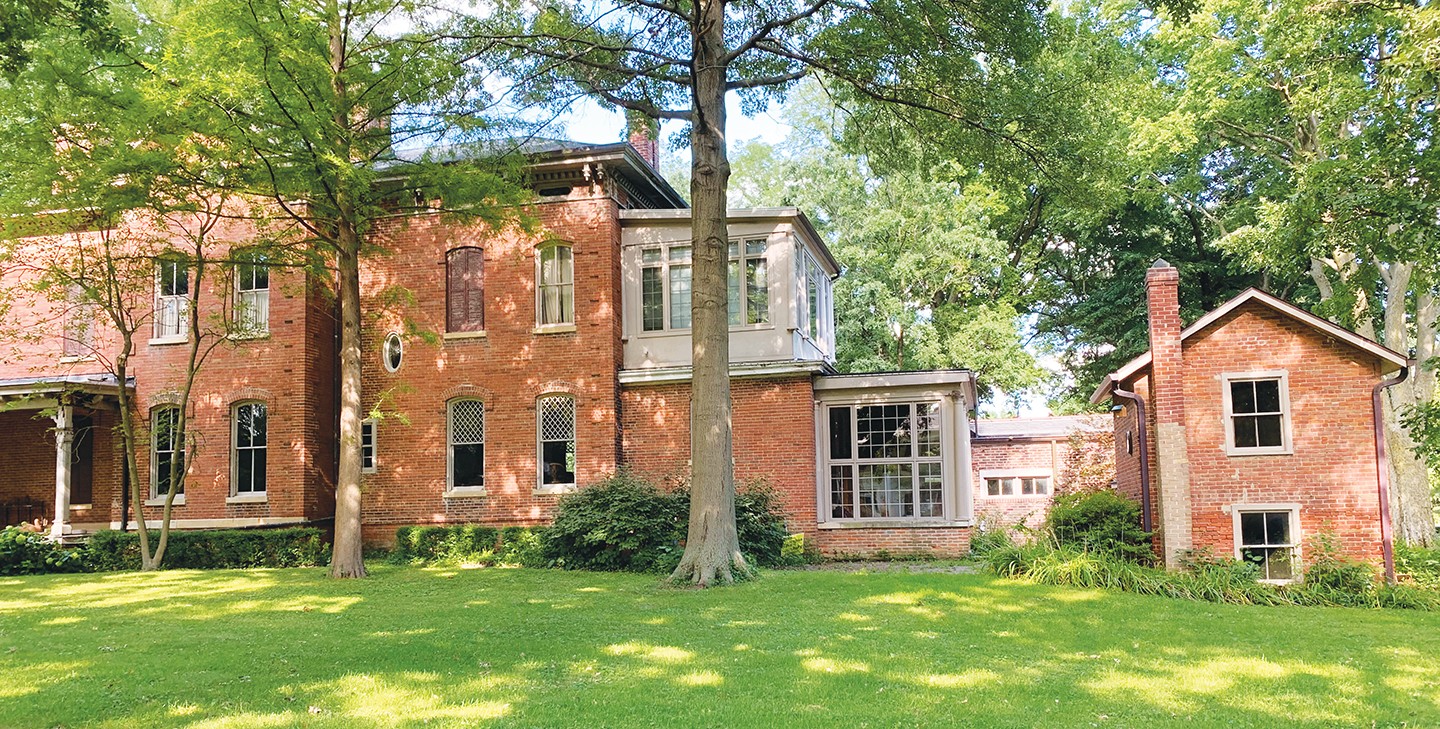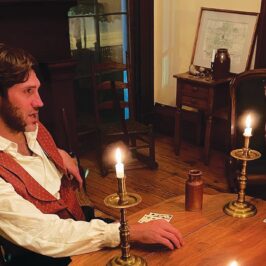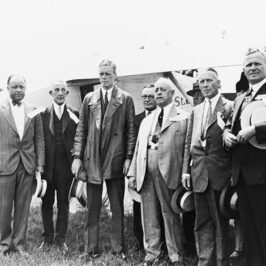By Cinda Ackerman Klickna

COURTESY SANGAMON VALLEY COLLECTION, LINCOLN LIBRARY The Colonel Noble Bates Wiggins family in front of the Leland house, around 1886.
Once, large, beautiful homes stood all over Springfield and were occupied by citizens who owned key businesses and held important positions within the city. Unfortunately, many of the homes have been demolished. Yet some still stand, thanks to people who have preserved them. Daily, people pass by these grand buildings: the Brinkerhoff House (North Fifth, built in 1869), Governor Yates home (Washington Park – 1904), Hickox House (formerly the site of popular Springfield restaurant Norb Andy’s and now Anchors Away on Capitol – 1839), the Belle Miller Apartments (now the Inn at 835 on Second Street – 1909), and the Booth-Grunendike house (1870), now Obed and Isaac’s, along with the Isaac Lindsay home (1850s), moved to Seventh and Jackson, now William Van’s.
One that is not as easily seen is tucked away off Cherry Road on Willemore and Wiggins. This large, two-story rambling brick home was once the house that stood on Leland Farm, built sometime between 1853 and the mid-1860s. Surrounding it was a large farm owned by the Lelands and the Wigginses, two prominent families of Springfield. The Leland Farm was the site of picnics, receptions, parties and even fairs. Pictures of the house and the Leland and Wiggins families, as well as descriptions of the many events that took place on the farm, filled newspaper articles from the late 1800s to the 1940s.
The Leland Farm covered over 600 acres, encompassing what is now Washington Park, Jerome and Leland Grove. Horace Leland came to Springfield in 1863. His brothers owned hotels in New York, Albany and Chicago. In Springfield, he, along with Col. Noble Bates Wiggins, managed the Leland Hotel at Sixth and Capitol. Wiggins was married to Horace’s sister, Clarissa.
Construction of the Leland Hotel began in 1864 and it opened in 1867. It cost $320,000 and for decades was the preeminent hotel in the city, hosting inaugural events and huge parties, housing entertainers and politicians, offering fine dining and the best in hotel amenities.
The Leland Farm provided much of the food served at the hotel. An 1880 Illinois State Register article listed the crops and animals: 70 acres of corn, 40 acres of oats, 7 acres of vegetables, and 70 acres of pasture, 2,500 grape vines, 200 hogs and 500 chickens. The hotel used 100 pounds of butter weekly, all churned at the farm.
Another family member who later became a prominent citizen of Springfield was Jerome Leland (1874-1937). He came to Springfield while an infant after the death of his parents in New York. He was raised by his aunt and uncle, Clarissa and Colonel Noble Bates Wiggins, who lived on the Leland Farm. An 1886 newspaper article pictures Clarissa and Col. Wiggins, their children Horace L. and Lewis Noble, as well as Jerome. Clarissa called Jerome her son, although he was never officially adopted.
Street names originated from the families that helped develop the area: Wiggins, Bates, Noble, Leland.

The Leland Home, as it looks today. The historic house has a new owner.
After Horace Leland died in 1889, Wiggins took over the hotel. The family often lived at the hotel and summered on the farm to escape the city heat. Wiggins died in 1901 and Clarissa and her children moved into the hotel, continuing to summer at the farm. Sons Horace and Lewis took over the hotel management until 1908, when a fire destroyed part of the hotel. (It was rebuilt and operated as a hotel until 1972. It is now the office of the Illinois Commerce Commission.) Both sons left Springfield soon after the fire.
Jerome Leland, Horace’s son, ran the farm and continued to host many events. A 1923 Memorial Day show sounds like an early state fair with displays of produce and animal judging. Prizes and ribbons were given for best in show.
Jerome Leland sold off lots around 1926. A portion sold in 1928 became the area now known as Jerome, incorporated March 18, 1939. He lived in the Leland Farm Home until 1942.
Langhorne Bond lived in the Leland Home during his time as the director of the Illinois Department of Transportation from 1973-1977. Appointed by Governor Dan Walker, he was instrumental in taking the agency from 21st in all 50 states to first in acquiring federal contracts. He went on to become the chief of the Federal Aviation Administration.
The house, which is not listed on the National Register of Historic Places, was owned by Al Eck who passed away in 2018. His widow sold the property in May to a neighbor, Frank Vala, a businessman who chairs the Springfield Airport Authority board. Brush and trees are being removed. Vala could not be reached for comment about his plans for the historic house.
Times have changed; today we drive down residential streets in Leland Grove and in Jerome, lined with many houses. It is hard to imagine the area of town being expansive farmland, populated with only a few homes. Luckily, we still have the Leland Home as a reminder of early days when many enjoyed outings on the farm.
Cinda Ackerman Klickna often writes about the people, places and events of Springfield’s history and loves to find out about old homes that still stand.






